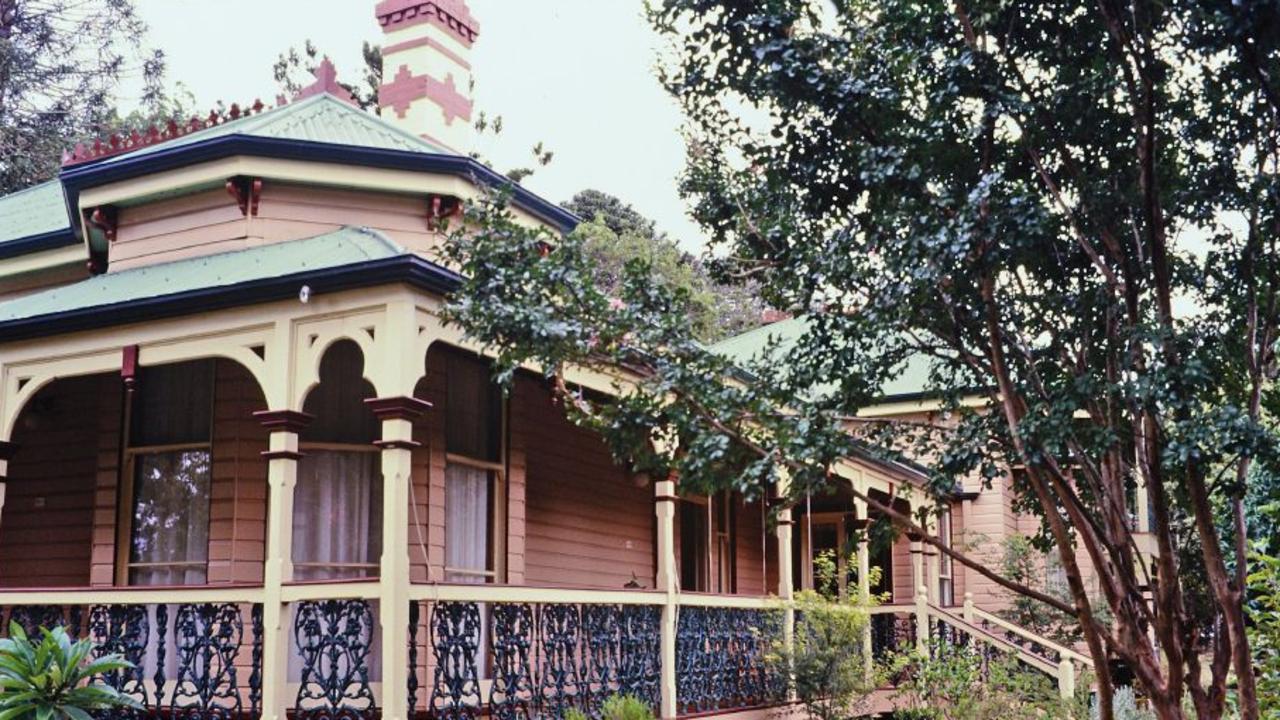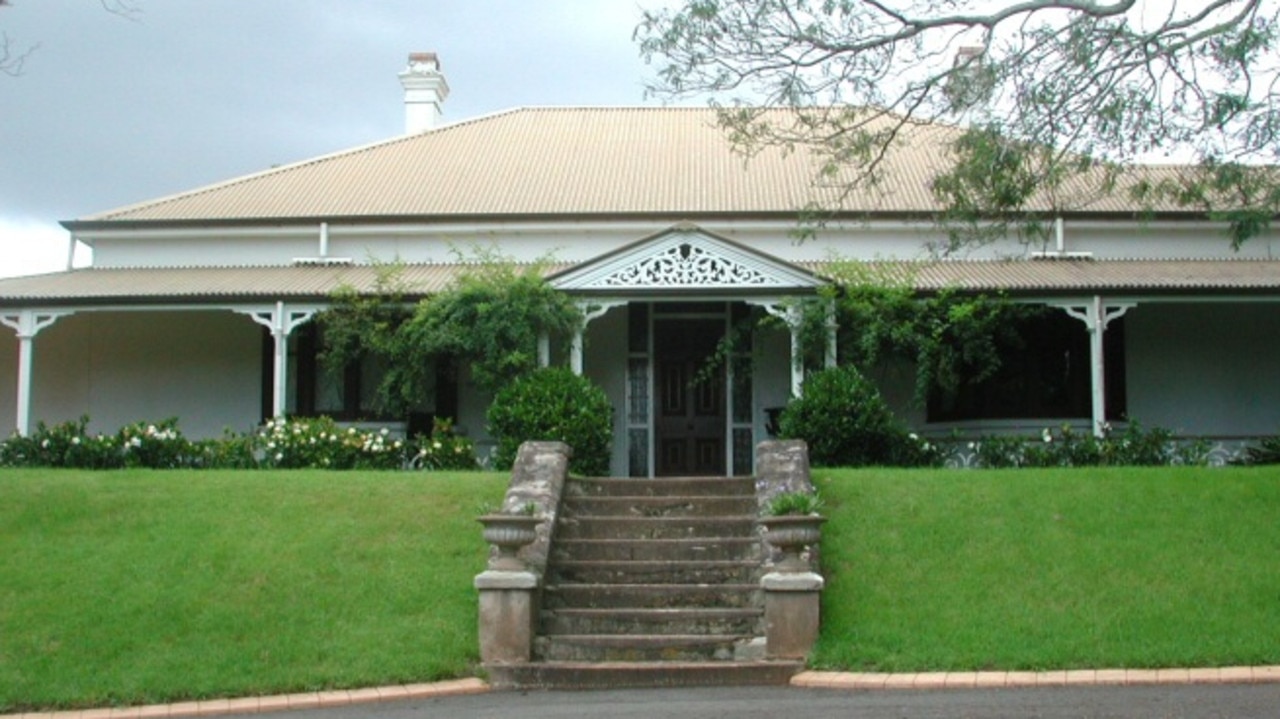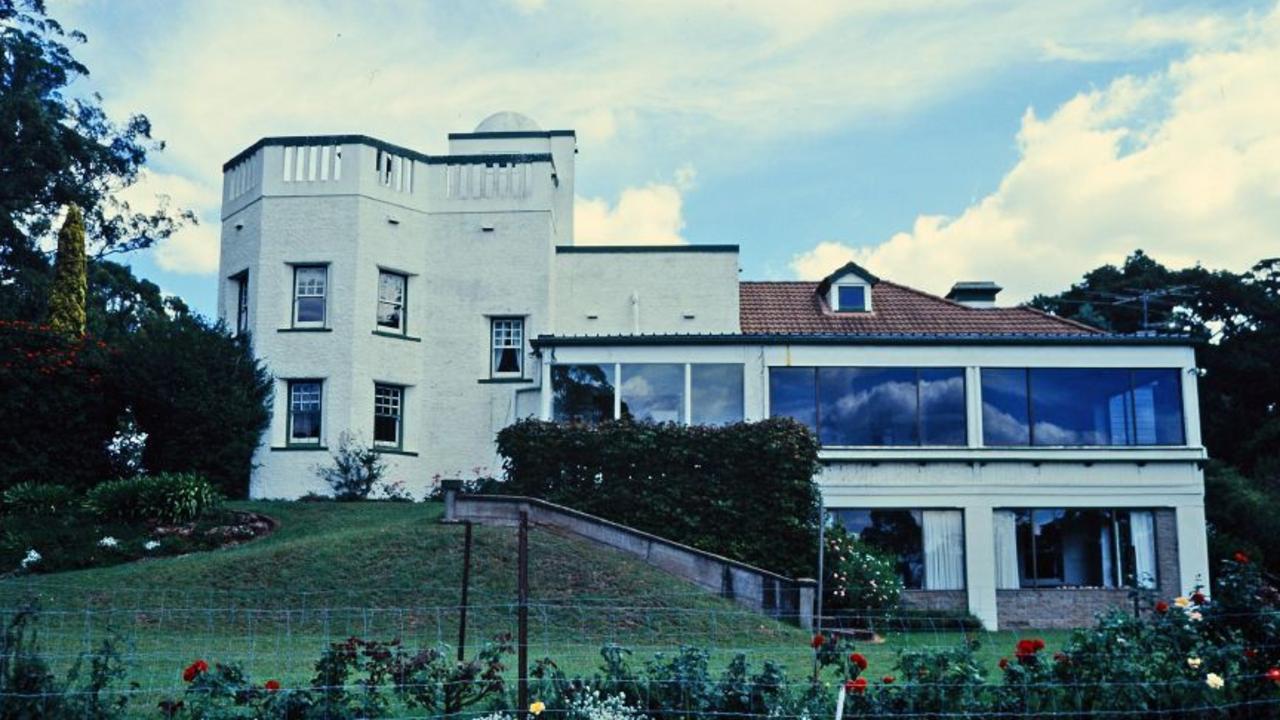25 historic Toowoomba homes and what they are used for now
Take a look at the architectual marvels from across the Garden City and the interesting history they have behind them. See what these 100+-year homes are being used for now.
Toowoomba
Don't miss out on the headlines from Toowoomba. Followed categories will be added to My News.
While new residential developments continue to pop up throughout the Garden City, the region is home to some stunning historical sites that let us glimpse back in time.
From popular wedding venues to newly renovated office spaces, Toowoomba’s historic homes continue to play a part in the region’s past and future, highlighting popular architectural designs and housing up-and-coming businesses.
The Chronicle has compiled a list of 25 historic homes across the Garden City, and what they are used for now.
Gabbinbar Homestead

The former home of Sir Hugh Nelson, former Premier of Queensland, this 10-hectare property was built in 1876 for his father, Reverend William Lambie Nelson.
The large property was originally 100 acres and consisted of a small red brick house, which is now the current building’s kitchen.
Renowned architect James Marks tendered for additions, alterations and paintings to be made at Gabbinbar Homestead in 1881.
The historic homestead, now registered with the Queensland Heritage Register, was a summer residents for the Governor of Queensland between 1906 to 1909, and remained in the Nelson family until 1970.
Now, the property is a popular wedding venue, after being purchased by Barry Bernoth around 2000.
Elphin

Built in 1907, the single-storey residence was designed for a Longreach pastoralist, to accommodate his property on Drayton Road.
The home has changed owners many times during its life, undergoing numerous renovations and upgrades.
During World War II, a large underground air raid shelter was constructed near the house.
Designed in a L-Shape frame, the home was transformed into four flats in 1952, before coming together once more as a family home in the late 1980s.
Now, the property has been subdivided, with the main house on a smaller piece of land and owned as a private resident.
The Newtown property is listed in the Queensland Heritage Register for its historical significance.
Tawa

The single-storey brick house was build in the 1860s and is regarded as one of the earliest dwellings in Toowoomba.
The home was built on Boulton Street, which would later become Boulton Terrace within the Mort Estate.
The property was originally a swamp allotment on the bank of the west swamp, and was established in a row of other terrace cottages by Martin Boulton, of which the street would be named.
After he was declared insolvent, the property was taken over by the Bank of New South Wales, and eventually, into the current owners hands in 1979.
The Toowoomba City property is listed in the Queensland Heritage Register for its historical significance.
Whyembah

This five-bedroom home was built on the outskirts of Queen’s Park in 1896 for a commercial traveller, which houses a bowling green and was eventually enlarged and renovated.
The property has changed hands multiple times since its construction, including being turned into flats in the 1970s.
In 2015, the East Toowoomba home was sold for $1.1 million, where it remains as a private residence.
The property is listed in the Queensland Heritage Register for its historical significance.
Glen Alpine

Designed by prominent Toowoomba architect, Harry J Marks, this two-storey timber home was believed to have been built around 1918, and owned by a chief justice of the supreme court.
The home, built on the eastern slop of Main Ridge, faces towards Tabletop Mountain, and in 1931, became the first domestic residence to have a swimming pool in Toowoomba.
Neal Macrossan moved into the property in 1931 originally as a holiday home and weekend escapes from the busy life of Brisbane.
When Mr Macrossan died in 1955, his daughter took over the property.
The property remains privately owned and is listed in the Queensland Heritage Register for its historical significance.
Fernside

Built in 1879 for a clerk of petty sessions in Toowoomba, the brick home was built in a prime location in East Toowoomba.
Almost overlooking the below valley, the home belonged in John Alexander Boyce’s family for more than 100 years, after Boyce’s daughter-in-law purchased the property in 1902, and stayed there until she died in 1969.
The home was eventually sold out of the Boyce family in 1978.
In its earlier years, the home was used as a summer residence by former Governor of Queensland Sir Arthur Kennedy. At the time, historic homes across Toowoomba were being used as holidays homes by prominent members of society, such as Premiers and Mayors.
The property, which sold in 2015 for $2.9 million, remains privately owned and is listed in the Queensland Heritage Register for its historical significance.
Bishop’s House

Originally called Killalah, the Bishop’s House on Margaret Street was built by Harry Marks around 1911 for businessman William Charles Peak.
About six years later, the home was purchased and renamed Dalmally.
Eventually, it was acquired by the Toowoomba Catholic Diocese in 1944 for Bishop Roper, therefore taking its now commonly known name.
The land, opposite Queen’s Park, is still owned by the Diocese, and is used for offices.
It is listed in the Queensland Heritage Register for its historical significance.
Gladstone House and Cottage

A single storey timber home, also referred to as St Rest, was created in 1908 by architect Harry Marks for himself and his family.
The main house was accompanied by the cottage around the same time.
The property, which was originally about 93 acres was a symbol of changing times as land began to be subdivided in the district.
The property was sold from the Marks family in 1955.
The house itself is still a private residence, however the land has been subdivided.
It is listed in the Queensland Heritage Register for its historical significance.
Gowrie House

Another home built by Harry Marks, Gowrie House was built around 1901 for businessman Alexander Mayers.
The low-set brick home was occupied by the Mayes family, and featured three large bedrooms, a drawing room and dining room all opening in the central hallway.
While it has changed hands multiple times, it was purchased by the Young Women’s Christian Association (YWCA) in 1945.
It is still owned and operated by YWCA offices near the popular Queen’s Park.
It is listed in the Queensland Heritage Register for its historical significance.
Carlton House

Carlton House was created in a prime location overlooking the Toowoomba Railway lines around 1875.
While it has changed hands multiple times, the home was said to be used by visiting families who would arrive via the train line and needed accommodation for multiple days. It was considered superior accommodation.
It is understand that during the 1930s, part of Carlton House was transformed into flats, and was eventually purchased by an UniSQ Engineer in 1998 reportedly in “poor condition”
It has since been restored and is a private residence.
It is listed in the Queensland Heritage Register for its historical significance.
Harlaxton House

A low-set single storey home overlooking the Toowoomba Range, the home was built for prominent family Francis and Marion Gregory, nee Hume, in the 1870s and subsequently names Harlaxton Manor.
Previously the mining commissioner for Stanthorpe, Francis Gregory would soon enter into the Queensland Legislative Council, and be listed as vice-president of the Horticultural Association and chairman and treasurer of the Toowoomba Grammar School as well as other things.
Former Governor of Queensland Lord Lamington rented the house for a short bit of time, and after the death of owners George and Dorothea Cook in 1982, the property has remained, for the most part, unoccupied.
It is listed in the Queensland Heritage Register for its historical significance.
Ascot House

A supposedly haunted location within Toowoomba, the privately owned Ascot House was built from the 1870s to the 1890s by father-son duo James and Harry Marks.
Originally built for a member of the Queensland Legislative Council, the property has undergone numerous renovations.
The site was originally a single-storey home, which would latter see a two-storeyed extension added on.
The land has been subdivided, with Ascot House now privately owned and rented.
It is listed in the Queensland Heritage Register for its historical significance.
Smithfield Homestead

Designed by dynamic father-son duo James and Harry Marks, Smithfield Homestead was built around 1895 for prominent Toowoomba businessman James Taylor.
Mr Taylor was considered to be a strong driving force behind Toowoomba development, and would later become Mayor and known as the King of Toowoomba.
His palace, at the edge of what was then the township of Drayton, was built on a 300-acre piece of land.
However, it is understood Mr Taylor never lived at the property, and was rented out, and for a short time, used as a private school during World War II.
The house was used by the Anglican Church for the Glennie Memorial School until 1962, and in 1974, despite public objection, was opened as a restaurant.
For a time, Smithfield Homestead was a popular location for weddings.
Recently, the homestead has been used as a disability day service centre.
It is listed in the Queensland Heritage Register for its historical significance.
Millbrook

Built in the 1860s for Toowoomba’s first mayor, William Henry Groom, the property has seen several owners and a change in location.
Originally built on Ruthven Street, Mrs Groom moved the home to Phillip Street after her husband passed while attending the first sitting of Australian parliament.
In 1933, the home was rented by Dr Allen Row, who would use the home for his private medical practice and surgery. After being severely wounded at Tobruk during World War II, Dr Row would have his own family in the home, as well as continue his practice and eventually, conduct numerous renovations across the home.
Recently, the home underwent a full renovation in he hopes of restoring it to its past glory.
It is listed in the Queensland Heritage Register for its historical significance.
Clifford House

A truly stunning property which is now the site of a well known Toowoomba restaurant, Clifford House on Russell Street was built in the mid 1860s.
Prominent businessman James Taylor originally owned the land, however the home was intended to be used as a gentleman’s club.
After the club fell into financial difficulties, it was purchased by Mr Taylor who used the property as his family home.
During it’s prime years, the home had 30 rooms, and an extended Billiard Room which is now used to house Gip’s Restaurant – named after Mr Taylor’s dog.
The home was a private residence until the 1970s, when it was converted into a restaurant and reception centre. In 1993, the ground floor of Clifford House was also leased to the Queensland Government.
It is listed in the Queensland Heritage Register for its historical significance.
Vacy Hall

Originally built on Russell Street in 1873 as a wedding gift, Vacy Hall has seen many things during its time, including a horrendous blaze that destroyed the site.
Commissioned by Toowoomba squatter and politician James Taylor as a wedding present for his daughter and son-in-law Gilbert Gostwyck Cory, Vacy Hall was built by father-son duo, James and Harry Marks.
Destroyed by fire in 1898, the damaged structure was replaced by the current masonry building in 1899.
Today, Vacy Hall is one of Australia’s grand historic boutique hotels, playing host to stunning weddings, romantic getaways and lifestyle escapes.
The 12-bedroom hotel is set on a heritage-listed acre property and is a prominent location in Toowoomba – highlighting both its past and future.
Kensington

This heritage-listed villa was built in 1897, and converted into professional office spaces in the early 1990s.
Kensington was an eight-room residence costing 1035 pounds at the time, and in 1912, was occupied by Dr David Horn, who would establish his own medical practice in the Garden City.
During its lifetime, the historic home has had many owners, including solicitor Arnold Lavers who moved in in 1922.
The home once had a private World War II air raid shelter and a large coach-house. In 1987, it was the site of one of Toowoomba’s superior restaurants, and is now being used as the office space of Hede Byrne and Hall Lawyers.
It is listed in the Queensland Heritage Register for its historical significance.
Wislet

Built in 1908, the detached home Wislet proved popular to families of prominent doctors, with Dr Friedrich Hinrichsen using a section of the family home as a medical suite.
The two-storey building held several names, but for many years, was known as the Wesley Hospital, when it was punched by the Methodist Church in 1963.
In 1980, the Uniting Church in Australia purchased the site and hospital, which operated until 1998.
To this day, Wislet retains its medical presence, and is the home of the Iona Medical Centre.
It is listed in the Queensland Heritage Register for its historical significance.
Tyson Manor

Originally a single-storey stone, Tyson Manor – also known as Strathmore, was built between 1880 and 1905 by local builder Richard Godsall for the Mattinsons family.
Sir Hugh Nelson, owner of Gabbinbar, was a trustee of the property and the brother of the lady of the house.
During its time, the home housed numerous families and underwent several additions and renovations, It was the entertainment location for Toowoomba’s elite, include Lord Northcote and Earl Dudley during their terms as Governors-General of Australia.
Today, the home is within the Downlands College grounds, with the ground floor used as a meeting space for the college, and the first floor as a resident for members of the religious community.
It is listed in the Queensland Heritage Register for its historical significance.
Harris House

Built around 1912, Harris House is an iconic brick home on the corner of Margaret and Clifford Street.
The home, now owned by the National Trust, is believed to have been built by local contractor Montague Ivory, where he lived until about 1919.
By 1921, the home was occupied by journalist and businessman John Mitchell Harris, hence the home’s known name.
The property has undergone conservation work to allowed continues use of multi-tenanted offices, and serves as a meeting spot for the National Trust’s Toowoomba Branch.
It is listed in the Queensland Heritage Register for its historical significance.
Geeumbi

Taking its name from the Indigenous name for Table Top Mountain, Geeumbi was built between 1914 and 1918 and overlooks the Toowoomba Range and Lockyer Valley.
Architect Ernest Pottinger constructed the home with the help of owner Dr Thomas Price, who has studied architecture before turning to medicine.
Dr Price was said to have been the man behind successfully draining the swamps and eradicating the mosquito problem across the city when he was elected to council in 1912.
The tower end of the house was reportedly designed for viewing the clear night skies, as Dr Price was apparently a keen astronomer.
The land has been subdivided numerous times, and remains used as private residence.
It is listed in the Queensland Heritage Register for its historical significance.
Tor House

Built in 1904, this single-storey residents was constructed for Mrs Frederick Hurrell Holberton by her nephew William Hodgen.
The home, blocked from public eye by gardens, held stables and a tennis court, and was subdivided numerous times in its earlier years.
Numerous renovations saw a kitchen built to the southwestern wing of the property, verandas enclosed, and a garage constructed in the 1980s.
The two acre property was purchased by its current owners reportedly in the 1960s.
It is listed in the Queensland Heritage Register for its historical significance.
Weetwood

Designed by renowned architect James Marks, the Georgian style villa was built in 1888, with renovations and additions done in the following years.
The property, near the current Clifford Park racecourse, was build for Richard William Scholefield, a Justice of the Peace and member of various clubs and organisations.
The home would be the residence of Toowoomba medical practitioners, including dentists and doctors, before being placed into the Weetwood Homestead Trust in 2020.
Restorations of the property have highlighted the brilliance of James Marks, with the property now available for functions and ceremonies.
It is listed in the Queensland Heritage Register for its historical significance.
Unara

Unara was built in 1906 for Sir Littleton Groom, son of Toowoomba Mayor William Henry Groom, and overlooked the stunning Lockyer Valley from it’s Tourist Road location.
The home was rented and sold following Groom’s death in 1867, however notably, was used as a mothercraft home from 1945 by the Department of Health.
The home was used to provide care for premature babies and their mothers requiring assistance in caring for their children.
Following the closure of the Mothercraft Home in 1977, the site was used as office space by the health department and has remained servicing the industry, as the current site of Sunrise Way.
It is listed in the Queensland Heritage Register for its historical significance.
Oak Lodge and Spreydon

Originally a large timber home and later divided into two villas, Oak Lodge and Spreydon was built in the 1890s for plumber and timber merchant Robert Walker Filshie.
Designed by James Marks and Son, the original home had a steeply pitched roof, and was later divided into two sections in the early 1920.
In 1908, the site, on the corner of Warra And Rome Streets, was opened as the Spreydon Girl’s College, and housed boarding quarters, a school room, kindergarten and tennis court.
The school became so popular, the owners had to find a larger location, which we now know as Fairholme College.
Oak Lodge now faces Warra Street and is unoccupied, while Spreydon faces Rome Street and is privately owned.
It is listed in the Queensland Heritage Register for its historical significance.








